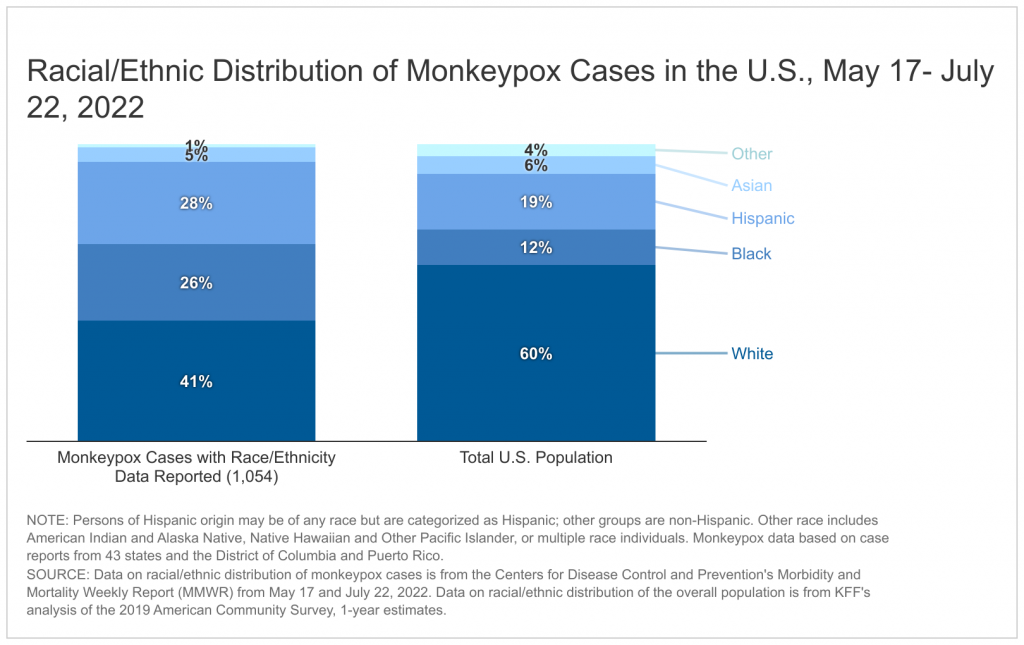
Early Data Show Racial Disparities in Monkeypox Cases
On August 4, 2022, the U.S. Department of Health and Human Services declared the U.S. monkeypox outbreak to be a public health emergency. The Centers for Disease Control and Prevention (CDC) recently released data on monkeypox cases reported in the U.S through July 22, including demographic data where available. Overall, these data show that, among U.S. cases with data available, nearly all were among men (99%) who reported recent male-to-male sexual or close intimate contact (94%). Additionally, as was the case with COVID-19, the early data show that Black and Hispanic people are bearing a disproportionate burden of monkeypox cases to date.
Data from 43 states and DC and Puerto Rico show that Black people made up 26% of cases compared to 12% of the population and Hispanic people accounted for 28% of cases versus 19% of the population. Data were not separately reported for American Indian and Alaska Native or Native Hawaiian or Other Pacific Islander people. CDC notes that areas with high numbers of cases that did not submit case reports are more racially and ethnically diverse. As such, the reported data may understate disparities. Moreover, the share of cases among Black people has risen in recent weeks, suggesting widening disparities for this group.
To date, race and ethnicity data is missing for the majority of monkeypox cases. CDC reports a total of 2,891 cases through July 22 in the 43 reporting states and DC and Puerto Rico. Case reports with at least some demographic data were available for 1,195 or 41% of these cases but only 1,095 or 38% of cases had race/ethnicity reported. Cases have continued to climb since the report, with CDC reporting over 10,000 cases as of August 11, 2022. As the COVID-19 pandemic highlighted, having comprehensive data disaggregated by race/ethnicity is necessary to identify and address disparities.
Overall, these early data highlight the importance of centering equity in monkeypox response efforts, including prevention, testing, and treatment, from the outset. Moreover, addressing challenges that include homophobia, stigma, and discrimination will be key given the disproportionate impacts among men who have sex with other men. Underlying structural inequities place people of color at increased risk for public health threats, as was seen in COVID-19 and as is beginning to be observed amid the monkeypox outbreak. Early and intentional efforts will be key to minimizing and preventing disparities going forward amid the monkeypox outbreak and for future public health threats.